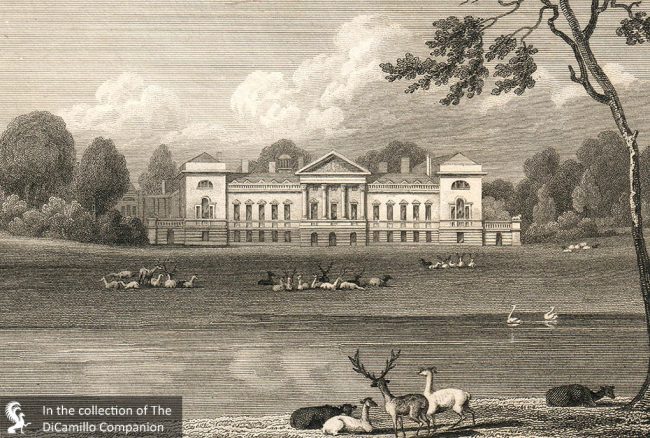
An 1820 engraving of the entrance facade from "Neale's Views of Seats"
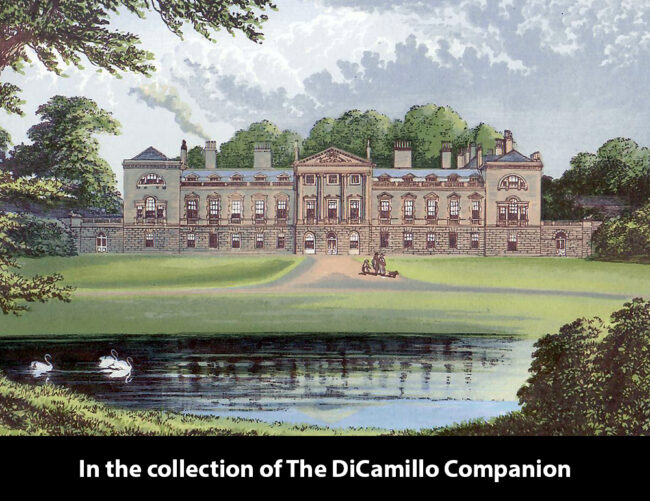
A circa 1880 lithograph of the entrance facade from "Morris's Views of Seats"
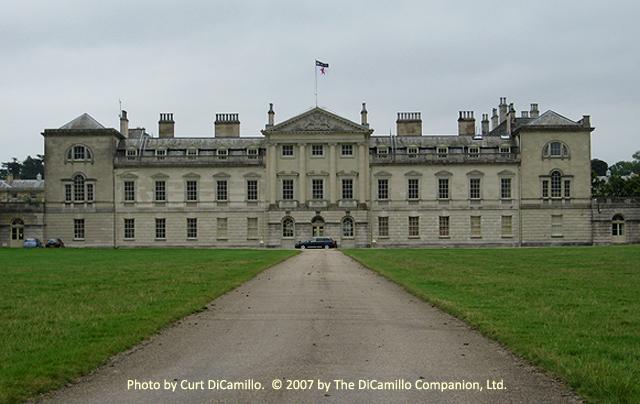
The entrance facade
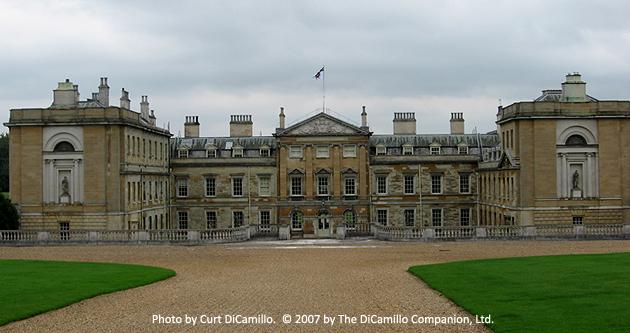
The garden facade
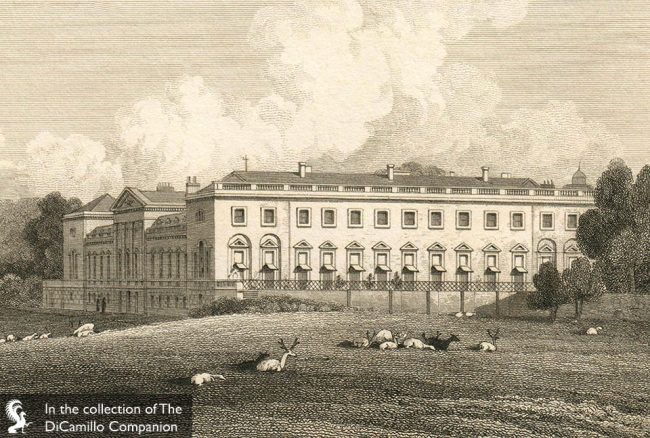
An 1820 engraving of the entrance and side facades from "Neale's Views of Seats"
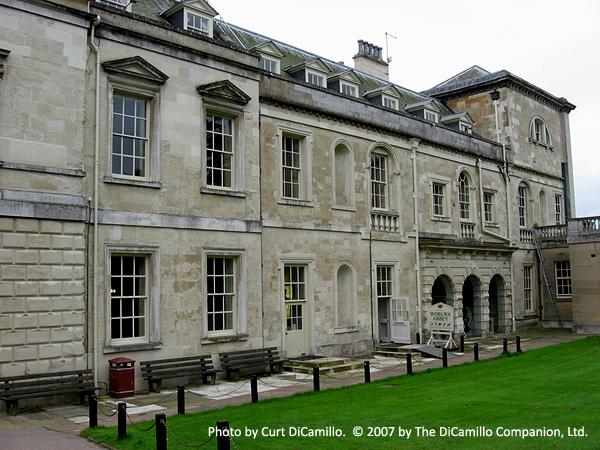
Side facade (today the visitor entrance to the house)
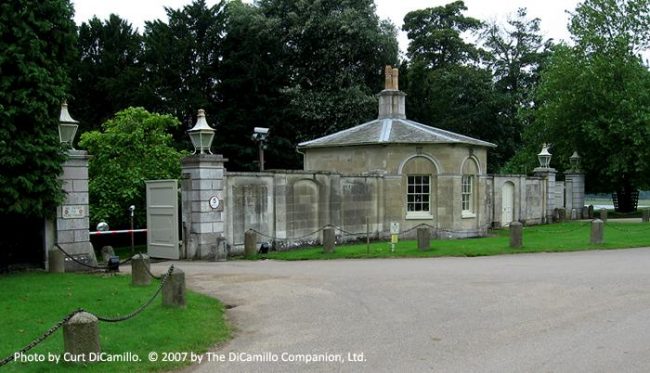
Gatehouse
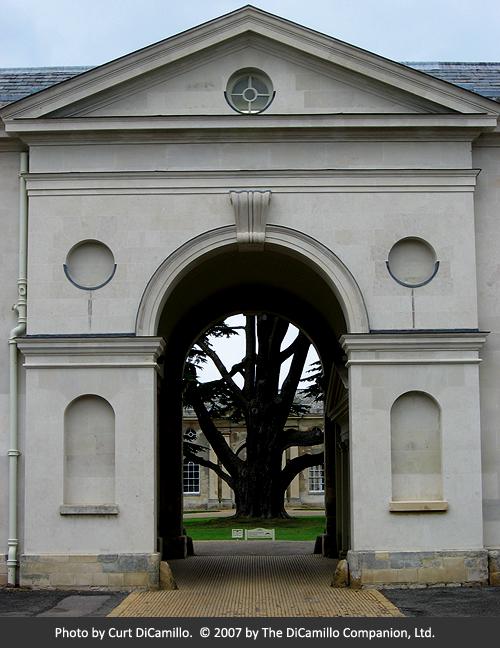
Entrance to the Stableblock
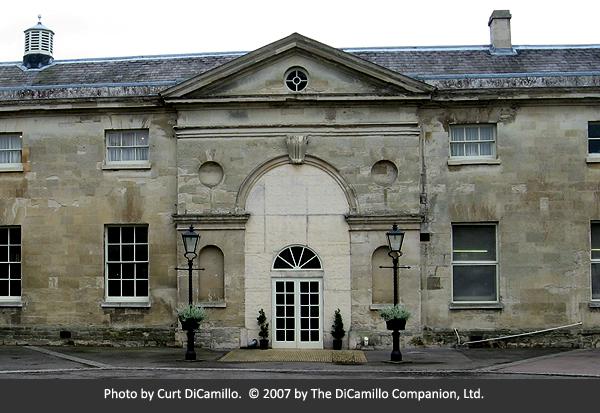
Stableblock
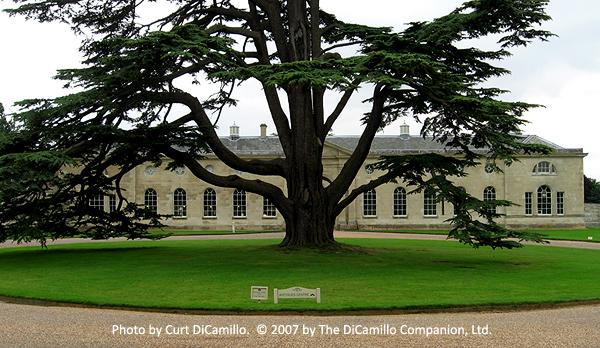
Stableblock
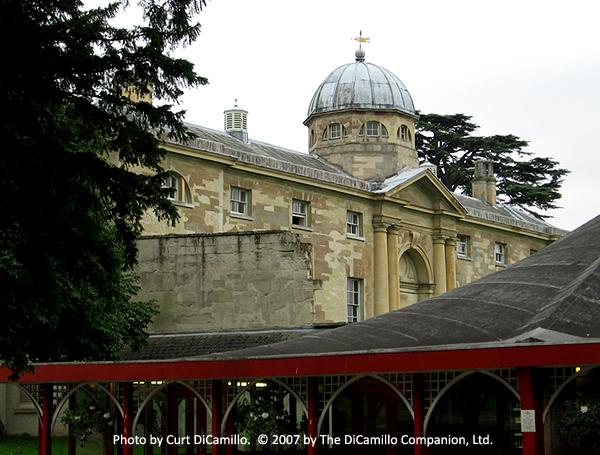
The Stableblock and the Chinese Dairy
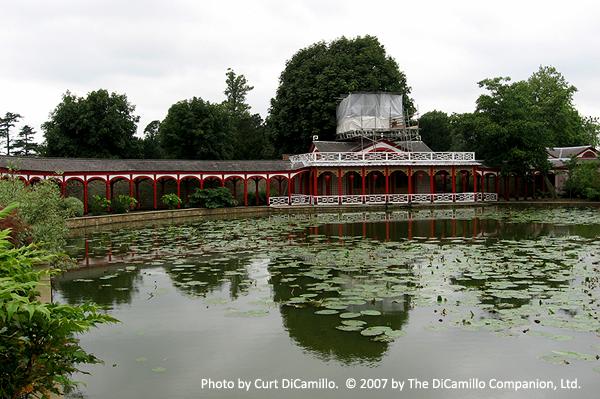
The Chinese Dairy
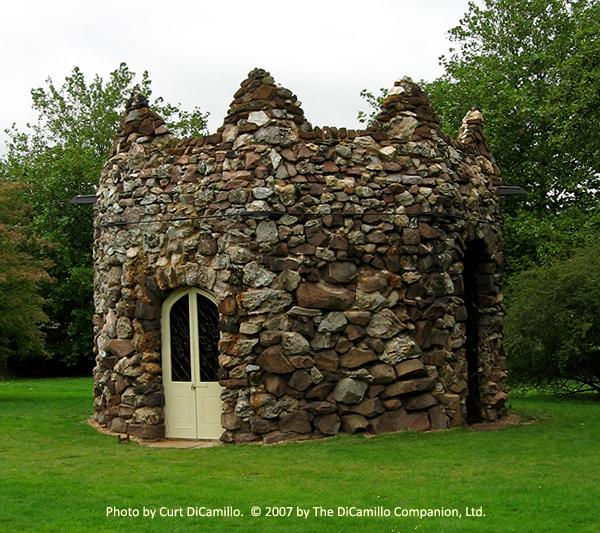
The Hermitage
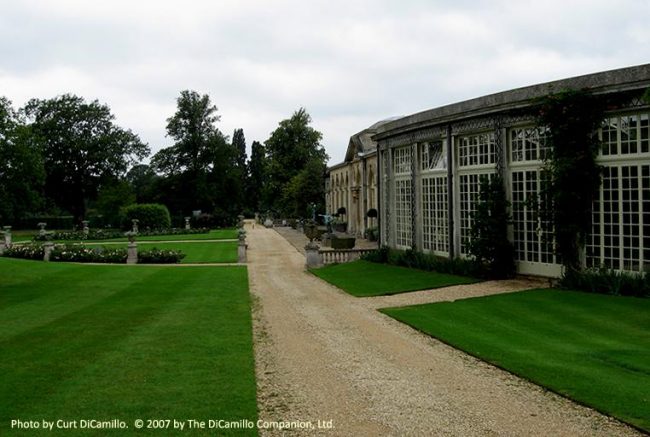
The Sculpture Gallery
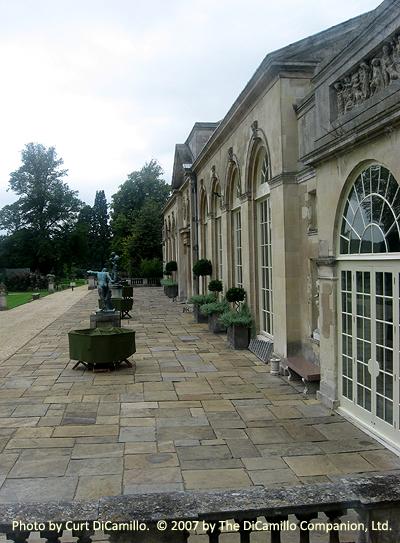
The Sculpture Gallery
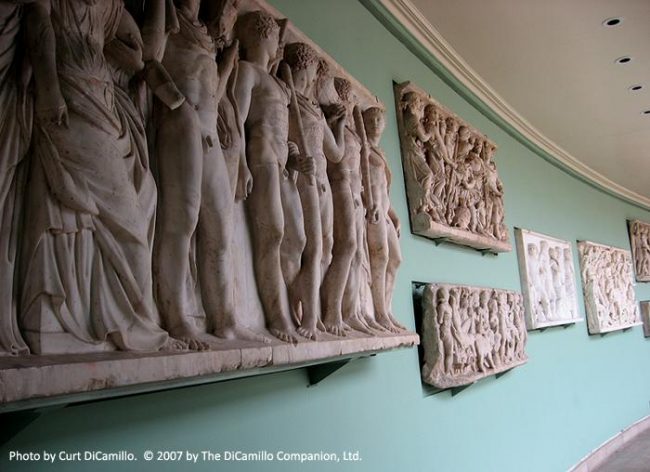
Interior of the Sculpture Gallery
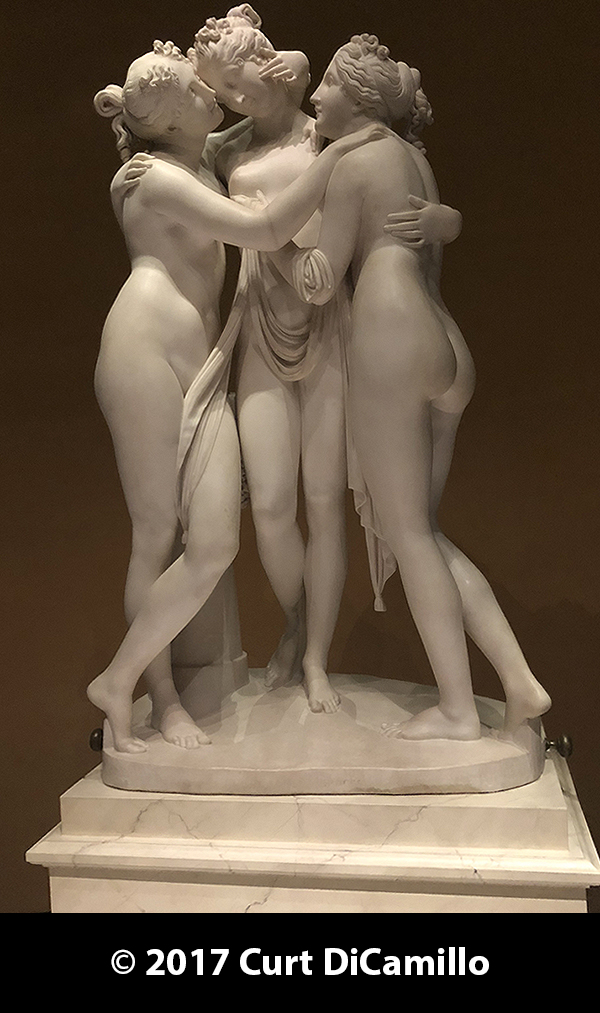
Canova's 1814-17 "Three Graces," formerly in the Sculpture Gallery, today in the collection of the V&A and the National Galleries Scotland.
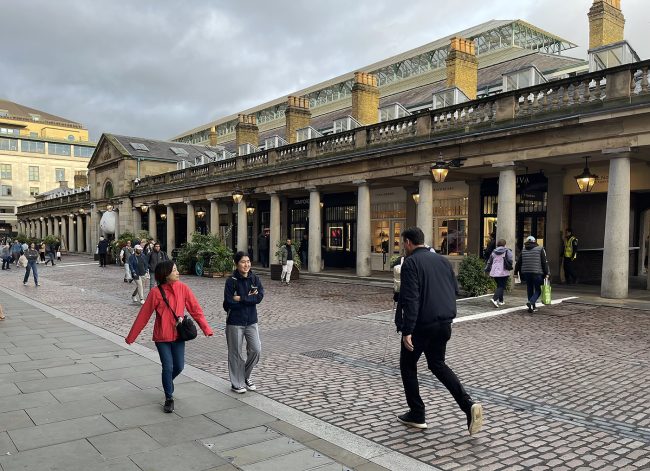
Covent Garden, once owned by the dukes of Bedford. © 2024 Curt DiCamillo.
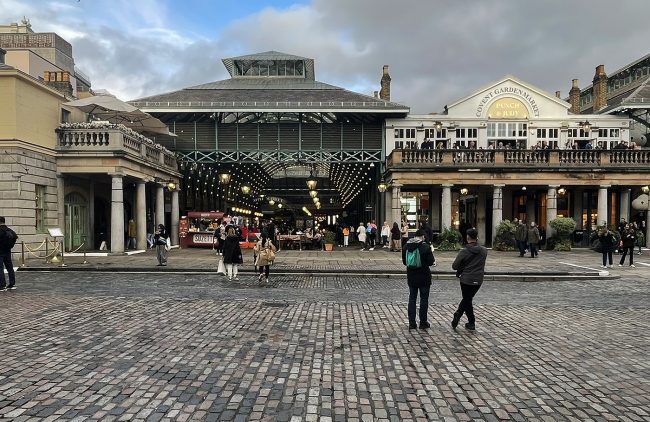
Covent Garden. © 2024 Curt DiCamillo.
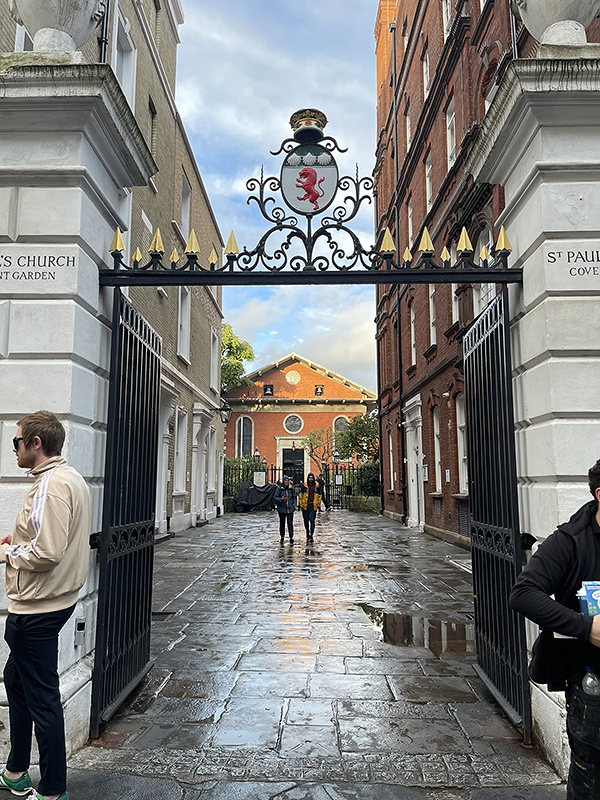
Entrance pathway to St. Paul's Covent Garden. © 2024 Curt DiCamillo.
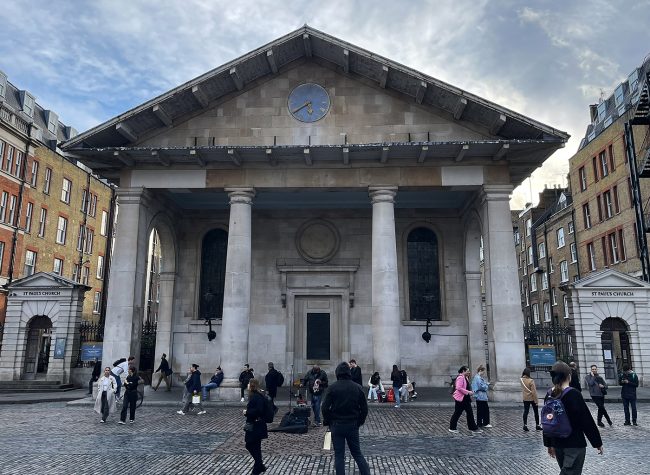
St. Paul's Covent Garden. © 2024 Curt DiCamillo.
Earlier Houses: The first buildings on the site were those of a Cistercian monastery, founded in 1145 by Hugh de Bolebec. In 1538 the abbot, Robert Hobbes, was found guilty of treasonable utterances against the king and the monastery was confiscated by Henry VIII, who later granted the abbey and its lands to John Russell, 1st Earl of Bedford. The 1st Earl created a private house from the monastic buildings, elements of which are probably in the foundation of the current house.
House & Family History: John Russell, 1st Earl of Bedford, was a gentleman of the Privy Chamber to Henry VIII and established the family fortune with the estates granted to him by the king as a reward for his services (Sir Francis Drake was the godson of the 2nd Earl of Bedford). The Frenchman Dominique Daguerre was employed in the 1780s to design interiors at Woburn Abbey; by 1787 he was working for the Prince Regent at Carlton House. Henry Holland's library at Woburn (complete with ancient column capitals) was created for the 5th Duke of Bedford in the 1790s and is one of the architect's most important works in the style of Louis XVI. Humphry Repton wrote fondly of the "sitting-library, where groups of family and guests could enjoy diverse pursuits in an atmosphere that was cultivated but informal." Tea came to England in 1662, when Charles II married the Portuguese princess Catherine of Braganza. The king’s new queen brought the exotic leaves to Britain as part of her dowry and soon the beverage became the must-have drink of royalty and the aristocracy, its exclusivity ensured by the fact that it was scarce and very expensive. Over the succeeding centuries the East India Company imported great quantities of tea into Britain, reducing its cost and making it more widely available. This set the stage for what happened next: in the 19th century the English upper classes had their evening meal around 8:00 or 9:00, which resulted in a long, foodless gap between lunch and dinner. This food chasm was filled around 1840, when Anna Maria, wife of the 7th Duke of Bedford and great friend of Queen Victoria, started taking afternoon tea in the Blue Drawing Room at Woburn, thus introducing the tradition to Britain. This light refreshment, served around 4:00, included food (usually bread, biscuits, butter, and fruit preserves) served with a pot of tea. In 1841 the queen herself, Victoria, together with her consort, Prince Albert, visited Woburn amid great fanfare; it was during this visit that the queen slept in the bedroom that bears her name today, though it was also slept in much earlier by Charles I. One of the most famous members of the Russell family was Mary, wife of the 11th Duke, who loved animals and traveled widely, at times using her yacht, "Sapphire," for bird watching expeditions. At Woburn she founded and designed a cottage hospital, Marylands, which was a model of its kind. But it is as a pilot that she is most remembered today. Known during her lifetime as the Flying Duchess, in the 1930s she had a grass runway installed in front of Woburn Abbey for her moths, the British de Havilland biplanes she famously flew. The story of this remarkable woman is told by Meriel Buxton in her 2008 book, “The High-Flying Duchess.” In 1926, at the age of 61, the duchess became interested in flying when she took her first lessons. In June of 1928 she accompanied her first pilot, Captain Charles Douglas Barnard, on an attempt to break the speed record from England to India (Lympne Airport, Kent, to Karachi); this attempt had to be abandoned, but was successful the following year. On April 10, 1930 she embarked on a record-breaking flight from Lympne Airport to Cape Town; in 1934 the duchess made extensive flights from Britain to the Western Sahara and Northern Nigeria. In March 1937 she took off in her de Havilland Gipsy Moth to view the flooded Fens and never returned. Parts of her aircraft were eventually washed ashore near Great Yarmouth, Norfolk. Today, for two days every August, members of the de Havilland Moth Club come to Woburn, with their planes, to celebrate the Flying Duchess and all things mothy. Between 1949 and 1951 the 12th Duke demolished the Riding School, the tennis court, and the east façade, the latter of which contained the entrance hall, and half of the north and south wings, leaving the house half of its original size. The Russell family has long owned large parts of London; today their holdings are primarily in the Bloomsbury section. In 1918 the family sold Covent Garden, a market they developed in the 1670s, and which received its name from the garden of a convent that once existed on the site. When the 13th Duke inherited Woburn in 1953 (he once mused that his family "thought themselves slightly grander than God") the great house was virtually derelict after occupation by the military during World War II. Famously, the duke, with his second wife, Lydia, set about restoring Woburn, doing much of the work themselves. In the 1950s the 13th Duke was one of the first in Britain to open his stately home to visitors and market it as a business. Today Woburn, and its associated attractions, receive more than 1.5 million visitors a year. Further reading—three books by the 13th Duke: "How to Run a Stately Home," 1971, with George Mikes; "A Silver-Plated Spoon," 1959, his memoirs; and "The Duke of Bedford's Book of Snobs," 1965, with George Mikes. In the mid-20th century the artist Roland Pym painted a series of murals in the Grand Saloon at Woburn that features pastoral scenes in the style of Rex Whistler that show the dukes of Bedford and their Covent Garden development.
Collections: Woburn contains an exceptional art collection, with many world-class paintings, including works by van Dyck, Reynolds, and 24 Canalettos commissioned by the 4th Duke of Bedford, who was the British ambassador to France in the 1760s and who successfully negotiated the Treaty of Paris in 1763. In gratitude, Louis XV presented the duchess with a Sèvres dinner service for 16, comprising 183 pieces, the majority of which still survive today at Woburn. The biscuit porcelain designed as table ornaments for the service are possibly the only examples to have survived from the 18th century, together with the service for which they were designed. Woburn also has in its collection a Sèvres sugar bowl and tray (soft-paste porcelain, 1779) that resembles a ship with a mast flying a pennant and chickens on each end, much like those on the prow of a ship. The bowl was made to commemorate a naval encounter between England and France off the coast of Cornwall on June 17, 1778, when the British frigate "Arethusa" and the French frigate "La Belle Poule" engaged each other (both sides claimed victory). The chickens' heads refer to the name of the French ship. The bowl is one of two examples of the shape at Woburn Abbey and are the only versions of this shape known to exist. The Sèvres collection at Woburn is the fifth most important in Britain, coming after the Royal Collection, the Wallace Collection, Waddesdon Manor, and the Victoria & Albert Museum. A large collection of silver and silver gilt is on display in the Silver and Gold Vaults, including two beakers and a porringer of solid gold, and a very fine late Neoclassical style silver gilt vase by Paul Storr of 1800 engraved with the arms of the 5th Duke of Bedford, founder of the collection of antiquities at Woburn. The vase was originally a tea urn, but had its tap and spigot removed to allow it to be suitable for display on the dining room buffet. The tripod on hoofed feet that rises to caryatid sphinxes is derived from the bronze table from the Temple of Isis at Pompeii, excavated in the mid-18th century. This urn is one of the earliest uses of Egyptian ornament in English silver. The ancient Roman marble Villa Lante Vase at Woburn is similar in size and decoration to the more famous Warwick Vase (today in The Burrell Collection, Glasgow) and was found, as was the Warwick Vase, at Hadrian's Villa. The Villa Lante Vase was purchased from John Campbell, 1st Baron Cawdor (1755-1821), one of the most remarkable collectors of antiquities in 18th century Britain. The famous 1588 Armada portrait of Queen Elizabeth I by George Gower is one of many masterpieces in the paintings collection at Woburn. The 6th Duke of Bedford commissioned Antonio Canova to sculpt the white marble statue of the Three Graces (see "Images" section). The statue, which features the daughters of Jupiter, was carved between 1814 and 1817 and installed at Woburn Abbey in 1819, where a small rotunda was built to house it within the sculpture gallery. The statue was sold from Woburn in 1994 and is today in shared ownership of the Victoria & Albert Museum, London, and the National Galleries Scotland, Edinburgh. A French and Italian gold, pearl, and intaglio tiara in the classical style of Napoleon, circa 1808-15, formerly in the collection of Woburn, is today in the collection of the Mikimoto jewelry company, Japan.
Comments: The collection at Woburn is considered one of the most important private art collections in the world. In April of 1786 John Adams, later second president of the United States, visited Woburn and other houses in the area. After his visits he wrote in his diary "Stowe, Hagley, and Blenheim, are superb; Woburn, Caversham, and the Leasowes are beautiful. Wotton is both great and elegant, though neglected."
Garden & Outbuildings: The grounds contain a 3,000-acre deer park with a herd of 600 Pere David deer that originally came from China (they were saved from extinction by the 11th Duke). The deer have since become extinct in China; in November of 1985 the Marquess of Tavistock donated 22 deer to the Chinese government that were released in the forests near Beijing. William Atkinson created the kitchen garden and pinery for the 6th Duke of Bedford before 1833. Woburn contains a 17th century grotto that is exceptional (few of these delicate rooms have survived). The stonework of the grotto is carved to resemble seaweed and the walls are covered with shells. The estate today comprises 16,000 acres. Repton's Red Book of 1804 is still on the shelves of the Woburn library.
Architect: Henry Flitcroft
Date: 1748-61Architect: Henry Holland
Date: 1787-1802Architect: Inigo Jones
Date: 1619-41Architect: Jeffry Wyatville (Wyattville) (Wyatt)
Date: Circa 1816-18Architect: William Atkinson
Date: Ante 1833Vitruvius Britannicus: C. IV, pls. 21-25, 1767.
John Bernard (J.B.) Burke, published under the title of A Visitation of the Seats and Arms of the Noblemen and Gentlemen of Great Britain and Ireland, among other titles: Vol. II, p. 190, 1853.
John Preston (J.P.) Neale, published under the title of Views of the Seats of Noblemen and Gentlemen in England, Wales, Scotland, and Ireland, among other titles: Vol. I, 1818.
Country Life: CXVII, 854, 1955. CXVIII, 434, 488, 1955. CXXXVIII, 98, 158, 1965. CLXXIII, 772 [park and garden buildings], 860 [Park and garden buildings], 1983.
Title: Warwick Vase, The
Author: Marks, Richard; Blench, Brian J.R.
Year Published: 1979
Reference: pg. 18
Publisher: Glasgow: Glasgow Museums and Art Galleries
ISBN: 0902752073
Book Type: Light Softback
Title: Devonshire Inheritance: Five Centuries of Collecting at Chatsworth, The
Author: Barker, Nicholas
Year Published: 2003
Reference: pg. 276
Publisher: Virginia: Art Services International
ISBN: 0883971380
Book Type: Softback
Title: Carlton House: The Past Glories of George IV's Palace
Author: Exhbition Catalog
Year Published: 1991
Reference: pg. 11
Publisher: London: The Queen's Gallery
ISBN: 095133736X
Book Type: Softback
Title: Woburn Abbey and its Collections
Author: Sutton, Denys (Editor)
Year Published: 1965
Reference: pgs. 50, 53, 57
Publisher: London: Apollo Magazine
ISBN: NA
Book Type: Hardback
Title: Treasure Houses of Britain, The - SOFTBACK
Author: Jackson-Stops, Gervase (Editor)
Year Published: 1985
Reference: pgs. 336, 466, 527, 568-569, 599
Publisher: Washington, DC: National Gallery of Art (New Haven: Yale University Press)
ISBN: 0300035530
Book Type: Softback
Title: English Country House: A Grand Tour, The
Author: Jackson-Stops, Gervase; Pipkin, James
Year Published: 1998
Reference: pg. 209
Publisher: London: Phoenix Illustrated
ISBN: 0753804395
Book Type: Softback
Title: Biographical Dictionary of British Architects, 1600-1840, A - SOFTBACK
Author: Colvin, Howard
Year Published: 1995
Reference: pgs. 368, 504, 1132
Publisher: New Haven: Yale University Press
ISBN: 0300072074
Book Type: Softback
House Listed: Grade I
Park Listed: Grade I
Current Seat / Home of: Andrew Ian Henry Russell, 15th Duke of Bedford; Russell family here since the 16th century.
Past Seat / Home of: John Russell, 1st Earl of Bedford, until 1555; Francis Russell, 2nd Earl of Bedford, 1555-85; Edward Russell, 3rd Earl of Bedford, 1585-1627; Francis Russell, 4th Earl of Bedford, 1627-41; William Russell, 5th Earl of Bedford and 1st Duke of Bedford, 1641-1700; Wriothesley Russell, 2nd Duke of Bedford, 1700-11; Wriothesley Russell, 3rd Duke of Bedford, 1711-32; John Russell, 4th Duke of Bedford, 1732-71; Francis Russell, 5th Duke of Bedford, 1771-1802; John Russell, 6th Duke of Bedford, 1802-39; Francis Russell, 7th Duke of Bedford, 1839-61; William Russell, 8th Duke of Bedford, 1861-72; Francis Charles Hastings Russell, 9th Duke of Bedford, 1872-91; George William Francis Sackville Russell, 10th Duke of Bedford, 1891-93; Herbrand Arthur Russell, 11th Duke of Bedford, 1893-1940; Hastings William Sackville Russell, 12th Duke of Bedford, 1940-53; John Ian Robert Russell, 13th Duke of Bedford, 1953-2002; Henry Robin Ian Russell, 14th Duke of Bedford, 2002-03.
Current Ownership Type: Individual / Family Trust
Primary Current Ownership Use: Private Home
House Open to Public: Yes
Phone: 0152-529-0666
Fax: 0152-529-0271
Email: [email protected]
Website: https://www.woburnabbey.co.uk/
Awards: The 1998 Good Guide to Britain Family Attraction of the Year.
Historic Houses Member: Yes